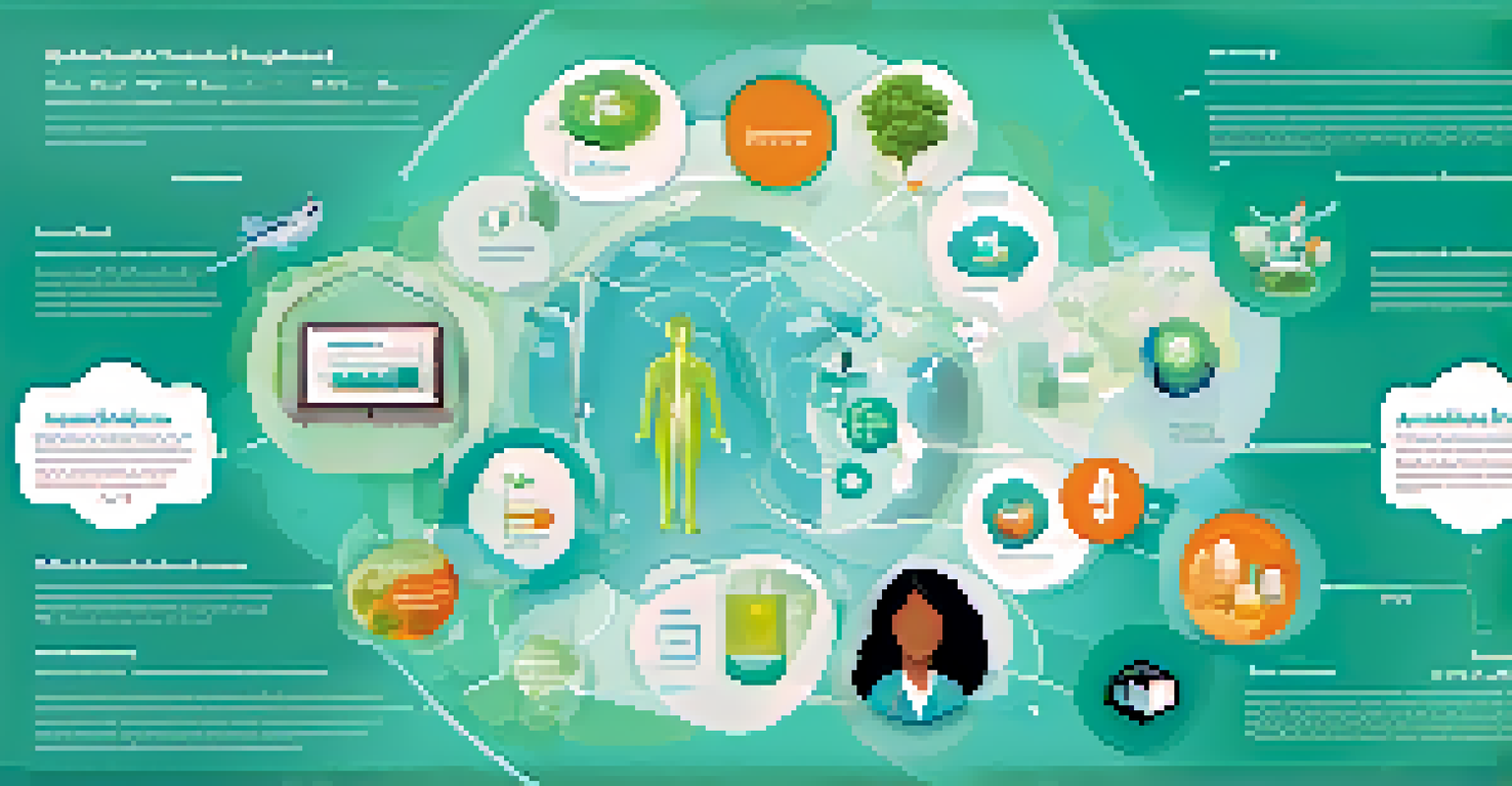Digital Therapeutics vs Traditional Treatments: A Comparative Study

Understanding Digital Therapeutics: A New Frontier
Digital therapeutics are evidence-based therapeutic interventions delivered via software or apps. They are designed to prevent, manage, or treat medical disorders and diseases, often leveraging data analytics and user engagement. Unlike general wellness apps, digital therapeutics undergo rigorous clinical trials to prove their efficacy and safety, similar to traditional medications.
Digital health technologies are transforming the way we think about treatment and prevention.
This innovative approach to healthcare allows for tailored treatments that can be adjusted based on user feedback and real-time data. For example, a digital therapeutic for diabetes management may provide personalized meal plans and exercise regimens. This adaptability is a significant draw for many patients seeking more control over their health.
Moreover, digital therapeutics can be accessed anytime and anywhere, making them a convenient option for busy individuals. By integrating technology into treatment, they offer a new layer of support that complements traditional methods, potentially improving patient adherence to treatment plans.
Traditional Treatments: Proven Methods with Deep Roots
Traditional treatments encompass a wide range of practices, including medications, physical therapies, and even surgical procedures. These methods have been used for decades, if not centuries, and are backed by extensive research and clinical experience. They often involve face-to-face interactions with healthcare professionals, which many patients find reassuring.

One of the notable strengths of traditional treatments is their established protocols and guidelines that ensure consistent care. For instance, a doctor prescribing antibiotics follows specific criteria based on clinical evidence. This reliability is comforting for patients who may be skeptical about newer treatment options.
Digital Therapeutics: A New Era
These evidence-based interventions use technology to provide personalized treatment for various health conditions.
However, traditional treatments can sometimes be less flexible than their digital counterparts. Patients may struggle with the rigidity of scheduled appointments or the need for in-person consultations, particularly in today’s fast-paced world. This is where the conversation between digital therapeutics and traditional treatments becomes increasingly relevant.
Efficacy: Comparing Outcomes in Real-World Scenarios
When it comes to efficacy, both digital therapeutics and traditional treatments have their merits. Digital therapeutics often show promise in areas like behavioral health, where studies report significant improvements in patient outcomes. For instance, cognitive behavioral therapy delivered through an app has been shown to help individuals manage anxiety and depression effectively.
The future of healthcare is not just about technology; it's about combining technology with human touch.
On the other hand, traditional treatments have long-standing evidence backing their effectiveness, especially in acute conditions like infections or injuries. For example, while a digital therapeutic might help manage chronic pain, a prescribed opioid may be necessary for immediate relief in severe cases. Each method has its strengths, and the choice often depends on the patient's specific needs.
It's essential to note that the integration of digital therapeutics and traditional treatments may lead to the best outcomes. Doctors are increasingly looking at digital tools as complementary options that can enhance the overall treatment experience and outcomes for patients.
Patient Experience: Engagement and Accessibility
The patient experience varies significantly between digital therapeutics and traditional treatments. Many patients appreciate the autonomy that digital therapeutics provide, allowing them to engage with their health on their terms. This can result in higher satisfaction levels and a sense of empowerment, especially for those who may feel overwhelmed in clinical settings.
Conversely, traditional treatments offer a personal touch that many patients value. The ability to discuss symptoms and treatment options face-to-face with a healthcare provider can foster trust and reassurance. This interaction is particularly important for patients dealing with complex medical issues or mental health concerns.
Traditional Methods Offer Comfort
Time-tested treatments provide reliability and face-to-face interactions that many patients find reassuring.
Ultimately, the choice between engagement styles comes down to personal preference. Some patients thrive in a tech-savvy environment, while others prefer the human connection that comes with traditional care. Understanding these preferences can guide healthcare providers in creating tailored treatment plans.
Cost Considerations: Affordability and Insurance Coverage
Cost plays a crucial role in choosing between digital therapeutics and traditional treatments. Digital therapeutics often come at a lower price point, with many apps available for free or through a subscription model. This affordability makes them accessible to a broader audience, particularly those without comprehensive health insurance.
In contrast, traditional treatments can be more expensive, especially when factoring in consultations, medications, and follow-up visits. Patients may face high out-of-pocket costs if their insurance does not cover specific treatments. Additionally, the financial burden can deter some individuals from seeking necessary care, leading to worsened health outcomes over time.
However, some digital therapeutics are beginning to receive insurance coverage, which could change the landscape of affordability in healthcare. As these options become more widely recognized, they might not only provide cost savings but also encourage patients to engage more actively in their health management.
Regulatory Landscape: Navigating Compliance and Approval
The regulatory landscape for digital therapeutics is evolving rapidly as technology advances. Unlike traditional treatments, which are regulated by agencies like the FDA, digital therapeutics must navigate a complex web of guidelines to ensure safety and efficacy. This includes undergoing rigorous clinical trials and obtaining necessary approvals before being marketed to consumers.
In contrast, traditional treatments have a more established regulatory framework, thanks to decades of research and historical data. This long-standing structure provides a sense of stability and trust for patients and healthcare providers alike. However, the rapid pace of innovation in digital health means that regulations are continuously being updated.
Future: Blending Both Approaches
Integrating digital therapeutics with traditional care can enhance treatment effectiveness and patient engagement.
As the regulatory landscape matures, it can pave the way for broader acceptance of digital therapeutics in mainstream medicine. Clear guidelines and compliance measures will help assure patients and providers that these digital solutions are safe, effective, and a valuable addition to traditional treatment methods.
The Future: Integrating Digital and Traditional Approaches
Looking ahead, the future of healthcare likely lies in a blend of digital therapeutics and traditional treatments. As technology continues to evolve, healthcare providers are recognizing the importance of integrating these two approaches to create comprehensive care plans. This hybrid model can cater to diverse patient needs and preferences, ultimately enhancing treatment effectiveness.
For example, a patient managing chronic pain could benefit from a digital therapeutic for daily monitoring and self-management, combined with in-person physical therapy sessions. This integration not only promotes a holistic approach to health but also encourages patients to take an active role in their care journey.

Moreover, as more research emerges on the effectiveness of digital therapeutics, we can expect greater acceptance and collaboration within the healthcare community. By combining the best of both worlds, we can create a healthcare system that is not only more effective but also more accessible and engaging for patients.